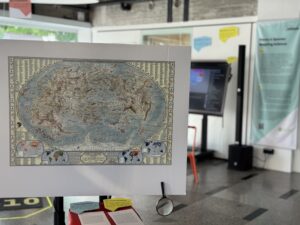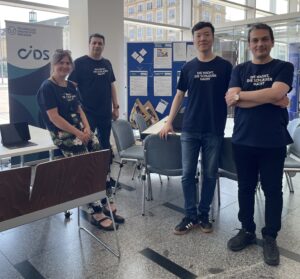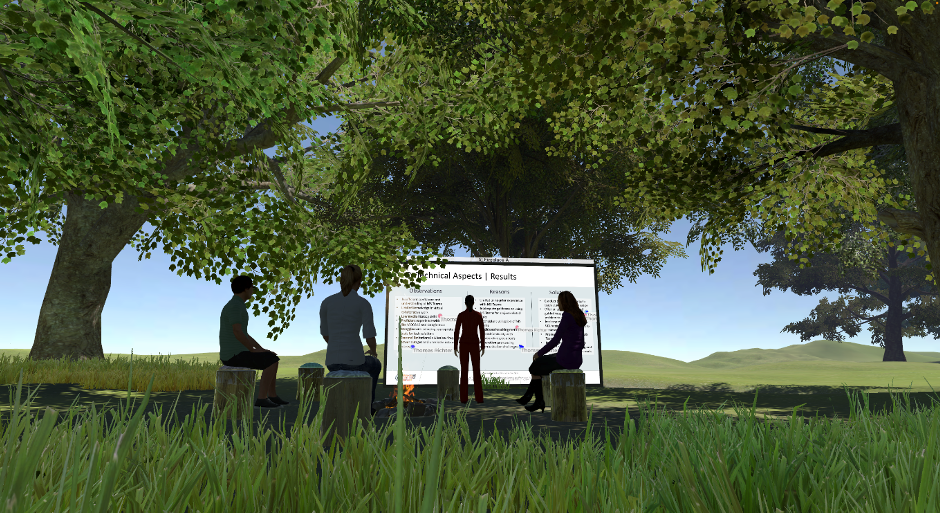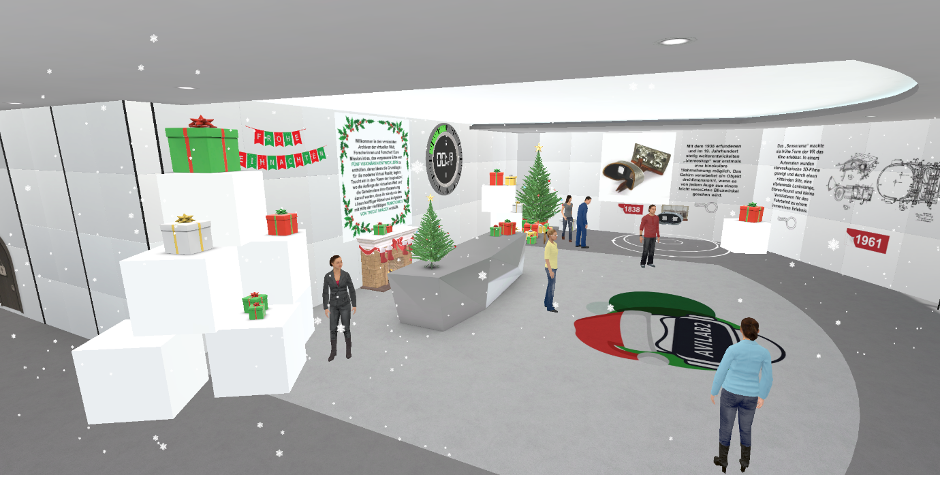The CODIP is shown at the LNDW
The annual Long Night of Science took place in Dresden on June 20, 2025. Various CODP projects and scientists showcased our research and our work to the public. The CODIP team supported four stations in the Kulturpalast and the COSMO Science Forum, which were delighted by the large turnout and helpful feedback from visitors. Over 1,200 guests took advantage of the opportunities in the Kulturpalast to "explore" exhibits and become part of the research themselves.
Positive feedback on the prototype in the project “Close the Gap – CtG-MigHa”
The CtG team used the opportunity to inform visitors about the relevance of standardized languages such as ESCO – a multilingual European classification of skills, competencies, qualifications, and occupations. We actively invited guests to support our research work by testing our prototype for recording professional and educational experiences, which is currently under development. Using an input mask, guests could have their own professional skills translated into the standardized ESCO language and subsequently provide us with important feedback on the prototype and their use of the standardized language.
We were pleasantly surprised by the interest in the project. Almost 50 visitors tested our prototype, which impressed us with its clear input screen and ease of use. The positive feedback after the testing also confirmed that visitors truly recognize the benefits of ESCO and its capabilities.
"I liked that the tool recognized patterns and thus automatically expanded the competency portfolio. I often don't have all the competencies on my radar. This fits well with the simple input mask." (Visitor feedback in the anonymous survey)
The positive feedback encourages us to continue our work.
- More information about the BMBF-funded project “Close the Gap – CtG-MigHa”
- More information about the standardized language ESCO
“Parks, LEGO® and menstruation? Excuse me?"
For a long time, it was not possible to discuss menstruation in public or to link it with public spaces - after all, it was seen as a topic that was as invisible as possible, inalterably painful and, above all, strictly private. However, the Long Night of Science showed that times have changed - many interested people, with and without their own menstrual experiences, came along to bring an unusual question to life using LEGO® SERIOUS PLAY®: What would a menstruation-friendly park look like for you? Wonderful models and ideas emerged, for example a climbing frame and climbing trees for adventures, self-cleaning, light-filled toilets, loungers, a café that lends out hot water bottles against a deposit, and a research station where people can give feedback on menstrual products. The results will be evaluated qualitatively and anonymously and will be incorporated into a dissertation on the effect of public green spaces on people.
"Look, it says something about menstruation, I definitely want to participate!" – who would have thought we'd hear such a sentence at the Long Night of Science? We certainly didn't – and we sincerely thank our participants for their trust and their great ideas.
“Immerse yourself, discover, understand: research and education in virtual reality”
Virtual reality (VR) is a medium that is enjoying increasing popularity – this was also evident at the station of our research group "Communities in Virtual Learning Spaces." Numerous visitors had great fun putting on VR headsets and immersing themselves in a virtual world for a few – or sometimes even many – minutes. Interested adults in particular explored various virtual reality learning applications, some of which we helped develop – and, for example, cleaned ionizing objects from a nuclear power plant that was being dismantled. The station was also a real magnet for children of all ages. If their hands were already big enough to grip the control unit, they could let off steam with a virtual game of tennis – and, at the same time, train their hand-eye coordination.
Once again, it became clear: people of all ages use VR applications intuitively – even without prior experience – feel present in the virtual environment, and enjoy using them immensely. Even visitors who wore VR headsets for the first time were enthusiastic – because research results, learning content, and playful activities are not just conveyed or presented in virtual reality – they become tangible.
“[in]visible – Visualization in Science”
 Why does a simple data graphic sometimes say more than a thousand words? How do scientists find the ONE piece of information in vast amounts of data? And how do they make it visible?
Why does a simple data graphic sometimes say more than a thousand words? How do scientists find the ONE piece of information in vast amounts of data? And how do they make it visible?
We encounter data visualizations everywhere – on television, in newspapers, and online – and they play a major role in science. They tell stories, evoke emotions, and shape opinions. This is precisely why it's important to be able to read and critically evaluate them in order to recognize patterns and the information behind them and make informed decisions. Data visualizations help make sense of the vast streams of data we are confronted with every day. Good visualizations can be exciting, aesthetic, and insightful. They reveal what lies hidden in large amounts of data.
In the current exhibition, visitors were able to gain insight into how data can be made visible and new connections discovered—for example, through interactive maps, models, and VR applications. The exhibition is open until August 6, 2025.







